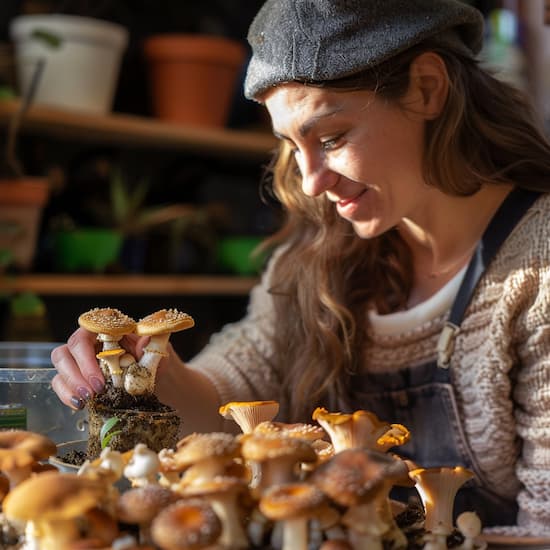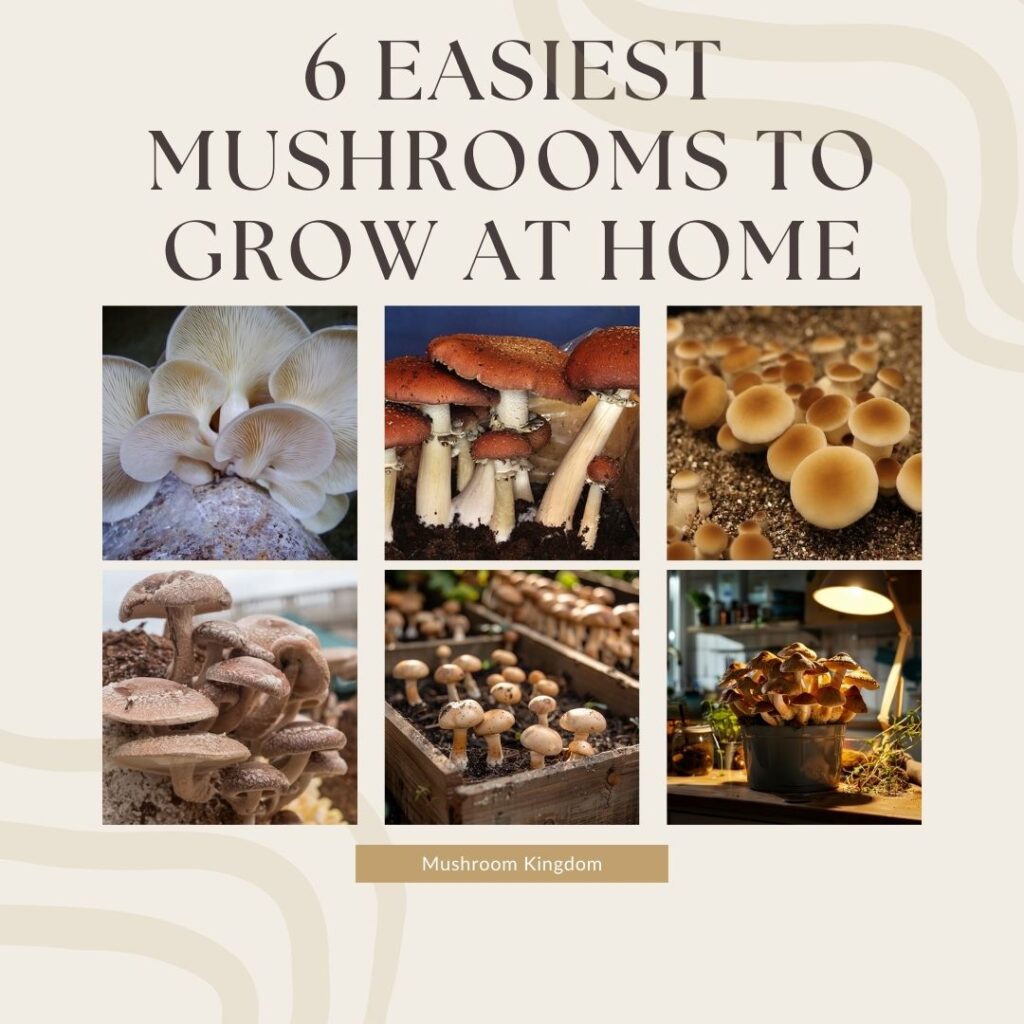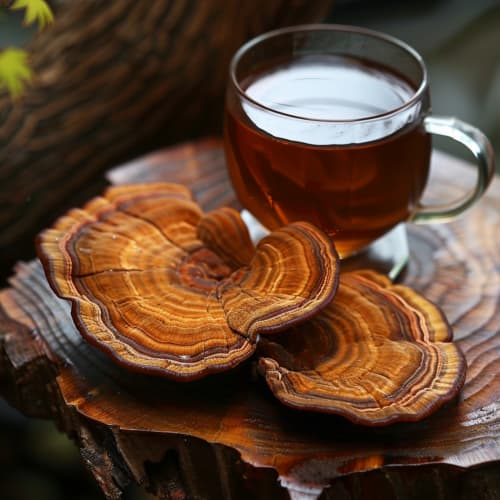Discover the best places to grow mushrooms in your home and elevate your home cooking with fresh, flavorful fungi. Whether you’re a seasoned gardener or a newbie to the world of cultivation, growing mushrooms indoors offers a rewarding experience that’s both delicious and sustainable.
Kitchen
Convenient and easily accessible, the kitchen is the perfect spot for small-scale mushroom cultivation. You can set up growing kits on countertops or shelves for a constant supply of fresh mushrooms for your culinary creations.

Setting up a mushroom growing kit on your kitchen countertop or shelves not only adds a touch of greenery to your cooking space but also ensures a steady supply of flavorful mushrooms right at your fingertips.
Basement
With its cool, dark environment, the basement remains one of the best places to grow mushrooms. Set up shelves or tables for your mushroom trays, and monitor temperature and humidity levels to ensure optimal growth.
Whether you’re a hobbyist looking to expand your growing operation or a commercial grower aiming for increased yields, the basement offers ample space to set up shelves or tables for your mushroom trays.
By monitoring temperature and humidity levels closely, you can create the perfect growing conditions for a variety of mushroom species, ensuring optimal growth and quality.
Closet
Transform a spare closet into a mini mushroom farm by installing shelves or racks for your growing containers. Control light exposure and temperature for maximum yield and flavour.
By installing shelves or racks for your growing containers, you can utilize vertical space efficiently, creating a compact yet productive growing environment.
With careful attention to detail, you can turn any closet into a flourishing oasis of mushrooms, ready to elevate your culinary creations to new heights.
Attic or Spare Room
Utilize unused spaces like the attic or a spare room for your indoor mushroom cultivation endeavours. These areas offer insulation and privacy, allowing you to experiment with different mushroom varieties and growing techniques.
With their insulation and relative isolation from the rest of the house, these areas provide a blank canvas for you to explore different growing methods and techniques.
Types of Mushrooms to Grow Indoors:
When it comes to indoor mushroom cultivation, the options are diverse and exciting. From the familiar favourites to the more exotic varieties, there’s something for every taste and skill level. Here are some of the easiest mushrooms you can grow indoors:
1. Button Mushrooms
A classic choice for beginners, button mushrooms are versatile and easy to grow. With their mild flavour and firm texture, they’re perfect for adding a savoury touch to soups, stir-fries, and pasta dishes.
Plus, their compact size makes them well-suited for indoor cultivation in small spaces.
2. Oyster Mushrooms
Another beginner-friendly option, oyster mushrooms are prized for their delicate flavour and velvety texture. These fast-growing fungi thrive in a wide range of growing conditions and are known for their high yields.
Whether you’re sautéing them with garlic and butter or adding them to a creamy risotto, oyster mushrooms are sure to elevate any dish with their earthy aroma and umami-rich taste.
3. Shiitake Mushrooms
Popular in Asian cuisine, shiitake mushrooms are prized for their rich, smoky flavour and meaty texture. While they require a bit more attention than some other varieties, shiitake mushrooms are well worth the effort.
With proper care and attention to detail, you can enjoy a bountiful harvest of these savoury delights, perfect for adding depth and complexity to stir-fries, soups, and noodle dishes.
4. Lion’s Mane Mushrooms
With their unique appearance and delicate flavour, lion’s mane mushrooms are sure to impress even the most discerning palate. These striking fungi boast a mild, seafood-like taste and a tender, meaty texture, making them a favourite among chefs and food enthusiasts alike.
While they require a bit more specialized growing conditions, the reward of harvesting your own lion’s mane mushrooms is well worth the investment.
5. Reishi Mushrooms
While they may take longer to mature than some other varieties, the health benefits and culinary potential is worth the time. Whether you’re brewing them into a soothing tea or incorporating them into your favourite recipes, reishi is sure to captivate your taste buds and nourish your body and soul.
Troubleshooting Common Issues
Contamination can be a frustrating setback in indoor mushroom cultivation, but with proper precautions, it can be minimized.
Ensure that your growing containers, substrate, and tools are thoroughly sterilized before use, and practice good hygiene habits throughout the cultivation process. Regularly inspect your mushroom trays for any signs of unusual growth or discolouration.
The two other common issues are pests and fluctuations:
Pests
While mushrooms are less susceptible to pests compared to other crops, they can still fall prey to invaders like mites, flies, and slugs. Keep a close eye on your mushroom trays for any signs of pest activity, such as chewed leaves or insect droppings.
Environmental Fluctuations
Maintain stable temperature and humidity levels to ensure consistent mushroom growth and prevent stress-induced issues. Invest in a reliable thermometer and hygrometer to monitor temperature and humidity levels accurately, and make adjustments as needed to maintain stable conditions.
Tips for Success
- Start Small: Begin with a single mushroom variety or small-scale growing project to gain experience before scaling up.
- Keep It Clean: Practice good hygiene and sanitation to minimize the risk of contamination and ensure healthy mushroom growth.
- Experiment: Don’t be afraid to experiment with different substrates, growing techniques, and mushroom varieties to find what works best for you.
Final Thoughts – Why Grow Mushrooms Indoors?
Indoor mushroom cultivation is on the rise, and for good reason. By bringing the growing process indoors, you gain greater control over environmental factors like temperature, humidity, and light, resulting in higher yields and consistent quality.
Plus, there’s nothing quite like the satisfaction of harvesting your own gourmet mushrooms right from your kitchen.


